This week, I’m updating my favorite canning recipes.
Late summer vegetables are here! Whoo hoo!
My wife devours pickled green beans. I used to make refrigerator pickled dilly beans, but it felt like the jars would be empty before I got them into the refrigerator. I doubled the recipe, then doubled it again, and switched to canning the pickled beans. I finally got ahead of her - the pickled green beans last into the fall.
While I was at it, I switched to a recipe without sugar in it. The traditional “Dilly Bean” recipe is just too sweet for me. (And that’s why I’m calling these Pickled Dill Green Beans - they seem closer to dill pickles than dilly beans.)
The only problem with this recipe? There’s a lot of chopping to trim five pounds of green beans. I try to sign the rest of the family up for a pickling party…and the kids run for the exits like I set off the smoke alarm. At least Diane is willing to help, with visions of pickled beans dancing in her head.
Recipe: Pickled Dill Beans
Adapted From: Ball Blue Book
Processing time: 10 minutes (more at altitude)
Equipment
- 6 pint canning jars and lids
- Giant pot for water bath, with a rack to keep the jars off the bottom
- Large sauce pot for vinegar brine
- Canning tongs
- (Other canning equipment, like lid lifters and canning funnels are helpful, but you can work around not having them)
Ingredients
- 5 pounds green beans
Vinegar Brine
- 4 cups white vinegar
- 4 cups water
- ¼ cup canning salt
Spices
- 6 cloves garlic, peeled
- 3 teaspoons crushed red pepper flakes (½ teaspoon per jar)
- 3 teaspoons dill seed (½ teaspoon per jar)
Directions
1. Prep the beans
Rinse the beans, then trim the stem ends from the beans and discard. Cut the beans into 4 inch long pieces, so they fit in the jars with a ½ inch of headroom.
Save the leftover ends of the beans for another meal.
2. Pack the jars
Sterilize the pint jars in a pot full of boiling water (or running through the dishwasher). Into each jar put 1 clove of garlic, ½ teaspoon of crushed red pepper flakes, and ½ teaspoon of dill seed. Tightly pack each jar with beans, tips pointing down. In a large saucepan, bring the vinegar, water, and pickling salt to a boil to make the brine. Carefully ladle the hot brine over the beans, leaving at least ¼ inch of headroom in each jar. If any of the beans are too tall and poke out of the brine, snip the exposed end with a pair of kitchen scissors.
3. Process the jars
For an overview of canning, see Using Boiling Water Canners and Principles of Home Canning [pdf][uga.edu/nchfp]
Wipe the edge of the jars clean with a damp cloth, then put the lids and rings on the jars. Process the pickles in a boiling water bath for 10 minutes (more at higher altitudes). Let the pickles cool overnight, then remove the rings and test the seal on the lids. Wait 2 days before opening to let the beans pickle; a week would be better.
Notes
- Intimidated by the boiling water bath part of canning? No worries. Do everything through step 2, then refrigerate the pickles. They’ll be ready to eat in two days, and they’ll last for about a month in the refrigerator.
- Six jars is an approximation - if you wind up with extra, that's a bonus. If you wind up with one more jar than will fit in your canning pot, treat it as a jar of refrigerator pickles, and eat it first.
- If any of the jars don’t seal, don’t worry - they just became refrigerator pickles. Refrigerate them and eat them within a month.
- I try to be careful when changing canning recipes. They recipes must have specific levels of acidity and salinity to preserve the food. Pickles are pretty safe; the acidity in vinegar lets me play around with the spices and a little with the ingredients, but I am careful to follow the brine and vegetable proportions from tested recipes. (That is, recipes tested by a state extension office to be safe for canning.)
- I leave the pointy end on the beans. Some people (like my Mom) believe beans should be trimmed on both ends. If you agree with Mom, make sure you get longer beans, to add a little extra height when you trim the other end.
- Ball's heritage blue canning jars make pickled green beans look good - the blue tint makes the olive gray pickled beans look more green. Compare the beans in the picture at the top of the page - the blue jar is in front, regular clear jars are in back.
What do you think?
Questions? Other ideas? Leave them in the comments section below.
Related Posts:
Pickled Asparagus with Hot Peppers and Garlic
Canning Jar Margaritas
Things I Love: Canning Jars
*Enjoyed this post? Want to help out DadCooksDinner? Subscribe to DadCooksDinner using the RSS or Email options on the right, recommend DadCooksDinner to your friends, buy something from Amazon.com through the links on this site, or donate through my tip jar. Thank you.

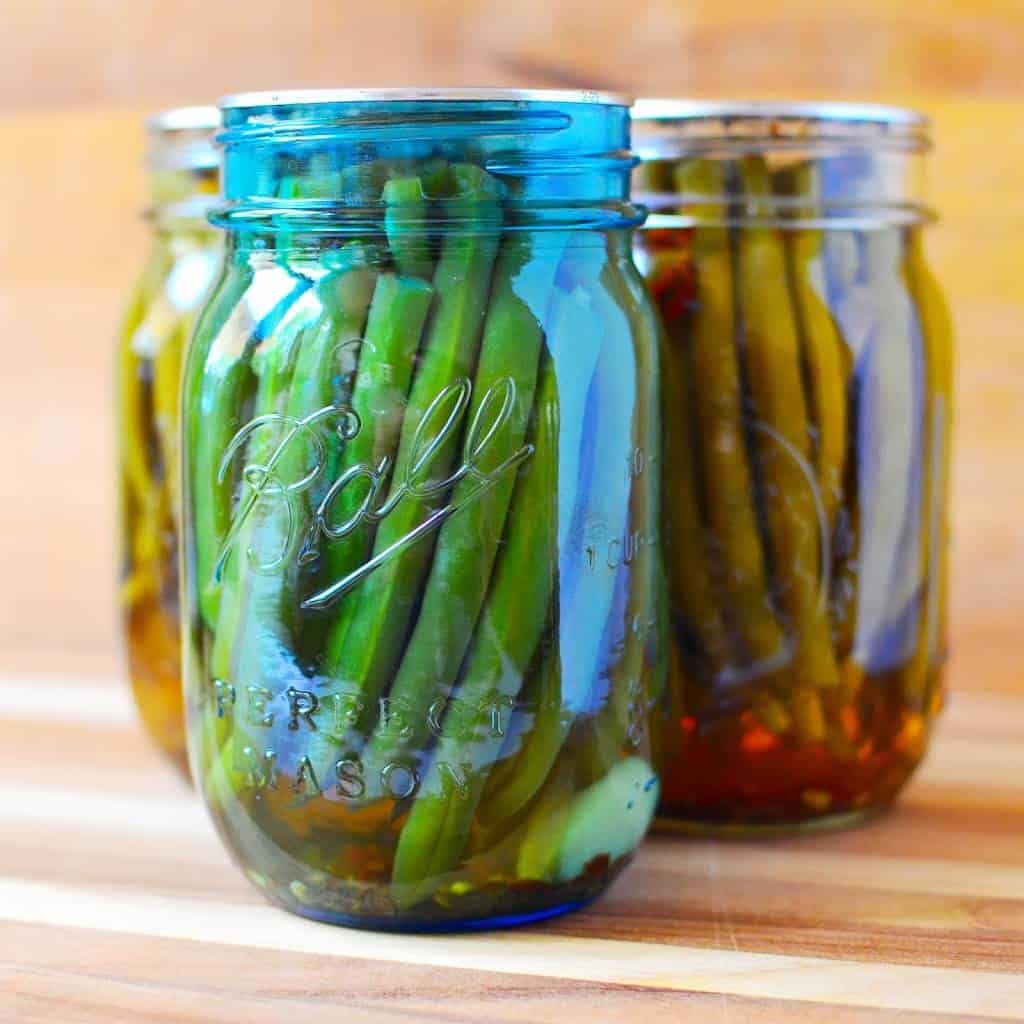
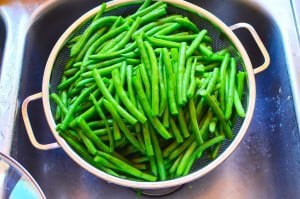
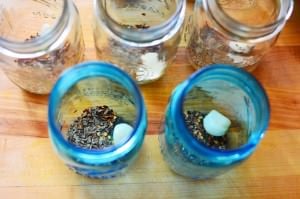

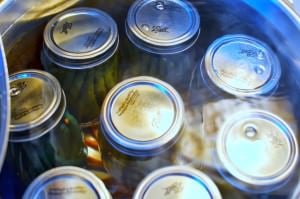
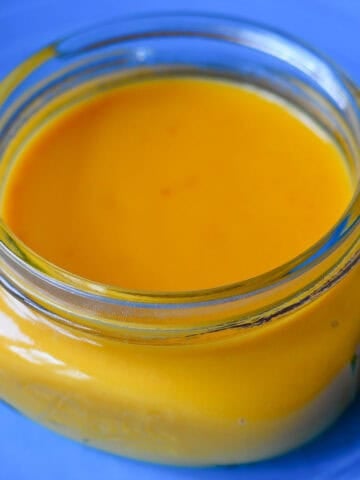
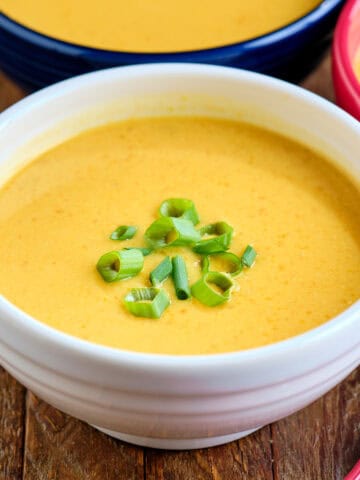
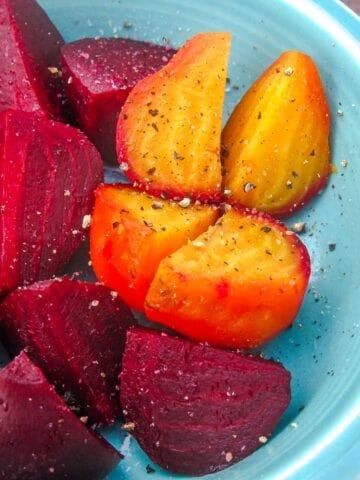

ShawshankReception
While on the subject, I heard about the author, Sandor Katz, on the Splendid Table podcast, quite the authority on fermentation. He's got a new book out, but his first one is considered by many to be the fermentation bible: http://www.amazon.com/The-Art-Fermentation-Exploration-Essential/dp/160358286X
Mike V @ DadCooksDinner
I'm still working on fermentation. A batch of sauerkraut worked for me; a batch of cucumber pickles got all moldy and nasty. Thanks for the video - I'll check it out.
ShawshankReception
Try the original way to pickle vegetables: via fermentation. It's a little bit more work, but you'll benefit from all the good bacteria. Here's a quick tutorial: http://www.youtube.com/watch?v=iNW7ujccc94